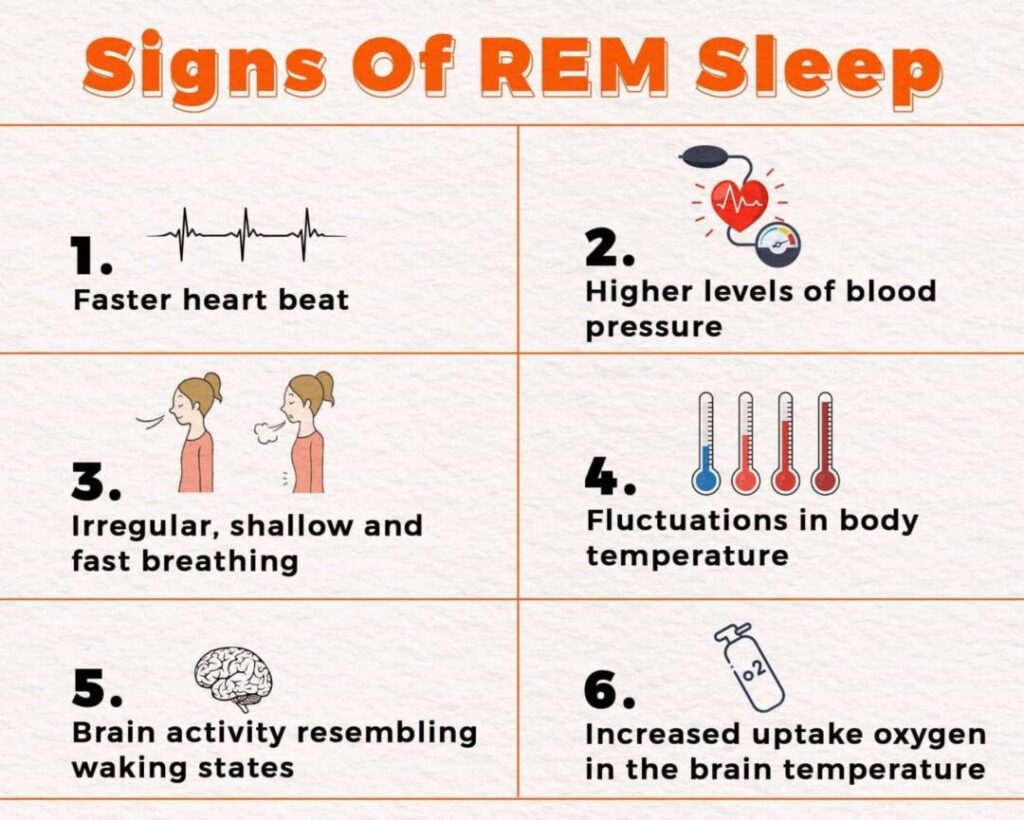REM Sleep (REMS)

REM Sleep (REMS): Overview and ImportanceREM sleep (Rapid Eye Movement Sleep) is a unique and essential stage of the sleep cycle characterized by rapid, random eye movements, vivid dreaming, and heightened brain activity that closely resembles wakefulness1245. It typically accounts for about 20–25% of an adult’s total sleep time, with most REM sleep occurring in the second half of the night134.
Key Features of REM Sleep
- Eye Movements: Rapid, irregular movements behind closed eyelids, believed to correspond with dream activity125.
- Brain Activity: EEG shows low-amplitude, high-frequency waves similar to wakefulness, earning REM the nickname “paradoxical sleep”245.
- Muscle Atonia: Almost complete paralysis of voluntary muscles (except for eyes and breathing muscles), preventing people from acting out dreams245.
- Physiological Changes: Irregular breathing, elevated heart rate, fluctuating blood pressure, and increased brain and core body temperature245.
- Dreaming: Most vivid and memorable dreams occur during REM sleep, though dreaming can happen in other stages as well1245.
Functions and Benefits
- Memory Consolidation: REM sleep is crucial for processing and storing new memories, especially emotional and procedural memories234.
- Emotional Processing: The brain processes and regulates emotions during REM, with the amygdala (emotion center) highly active34.
- Brain Development: Infants and young children spend much more time in REM, supporting brain growth and development234.
- Mental Health: Adequate REM sleep is linked to better mood, alertness, and a stronger immune system34.
REM Sleep Cycle and Regulation
- Timing: REM sleep first occurs about 60–90 minutes after falling asleep and recurs every 90–120 minutes, with each REM period lengthening throughout the night45.
- Regulation: Controlled by complex brain circuits involving the hypothalamus, pons, thalamus, and neurotransmitters like acetylcholine and GABA25.
- Circadian Influence: The suprachiasmatic nucleus (SCN) in the hypothalamus helps time REM sleep within the overall sleep cycle2.
Summary Table
| Aspect | REM Sleep (REMS) Characteristics |
|---|---|
| Brain Activity | High, similar to wakefulness (paradoxical sleep) |
| Eye Movements | Rapid, irregular, under closed eyelids |
| Muscle Tone | Nearly absent (atonia), except for eyes and breathing muscles |
| Dreaming | Most vivid, frequent dreams |
| Functions | Memory consolidation, emotional processing, brain development |
| Cycle Timing | Recurs every 90–120 minutes, increases in duration overnight |
Consult with Our Team of Experts Now!
At DrStemCellsThailand (DRSCT)‘s Anti-Aging and Regenerative Medicine Center of Thailand, we emphasize comprehensive evaluations and personalized treatment plans of Cellular Therapy and Stem Cells for managing various health conditions. If you have questions about REM Sleep (REMS) or would like more information on our services, consult with our experts today!
Consult with Our Team of Experts Now!
References:1 Cleveland Clinic – Sleep Basics2 Britannica – REM Sleep3 UCI Health – Why We Need REM Sleep4 Sleep Foundation – REM Sleep5 Wikipedia – Rapid Eye Movement Sleep
REM sleep is vital for cognitive, emotional, and physical health. Disruptions in REM sleep can affect memory, mood, and overall well-being.















